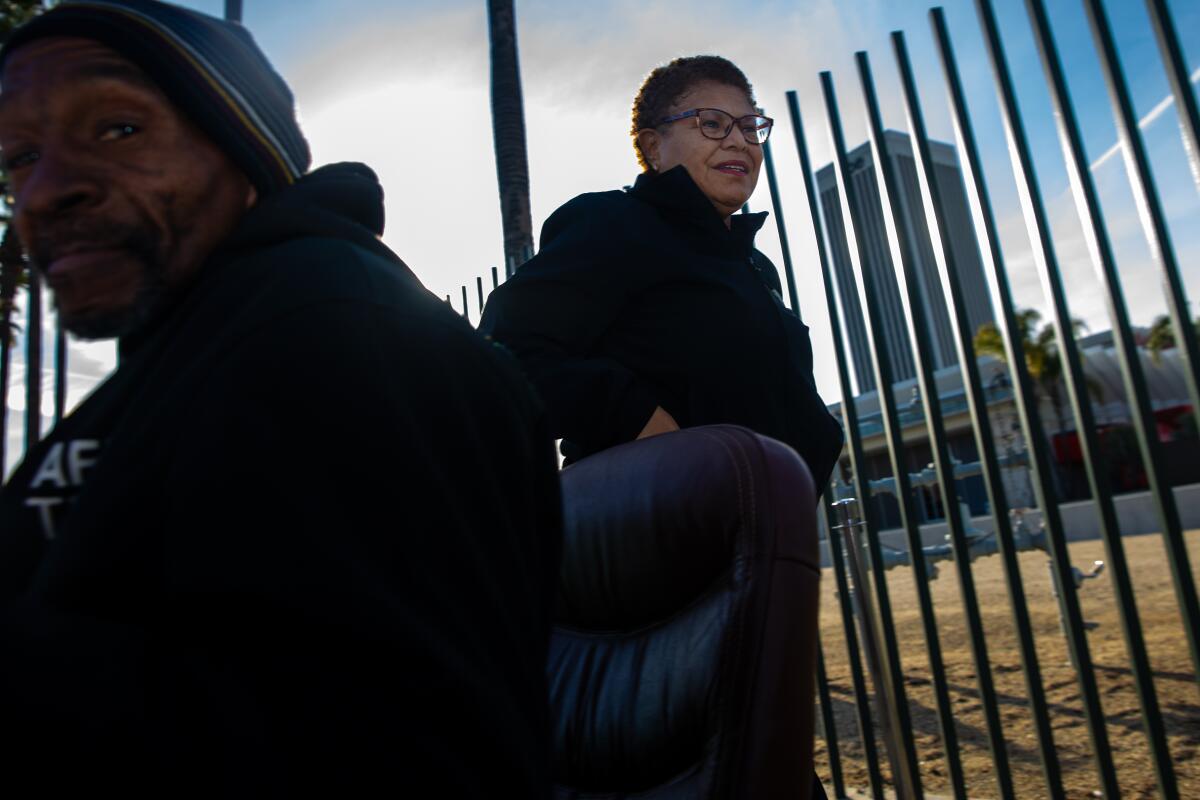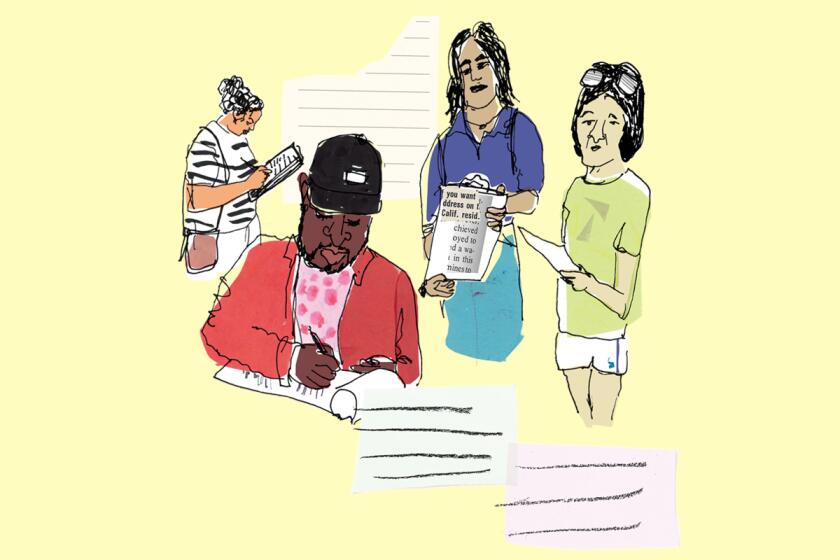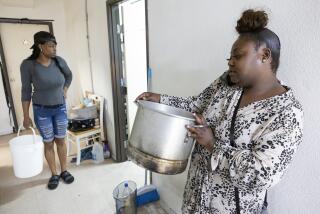1 out of 6 people have left the housing provided by L.A. homeless program, agency says

- Share via
About one out of every six homeless people who have taken part in Los Angeles Mayor Karen Bass’ Inside Safe initiative have either left the program’s housing facilities or exited the program entirely, according to figures prepared by the regional agency charged with addressing homelessness.
The Los Angeles Homeless Services Authority reported this week that Inside Safe, which has been moving people out of encampments and into hotels, motels and other facilities, had an 83% housing retention rate through Thursday — raising the prospect that a significant number of participants in the program have gone back to the streets.
The agency reported that 153 people, or 10.5% of Inside Safe’s participants, have exited the program entirely. Six of them died, at least four due to fatal overdoses, according to the mayor. Four were placed in medical or psychiatric facilities and three were incarcerated, the agency’s dashboard said.
On top of that, 6.6% of Inside Safe’s participants are now listed as being “served from the streets.” That classification refers to people who have moved out of Inside Safe’s interim or permanent housing but are still engaging with outreach workers, according to the agency.
Those figures could easily change. LAHSA’s Inside Safe figures have fluctuated in recent weeks, as the housing status of Inside Safe participants changes and agency staffers attempt to refine their numbers. For example, in its report, the agency said it is trying to resolve questions around 42 clients who “have no record of ever entering interim housing.”
You can help someone get on the path to housing — and make your voice heard on issues of housing and homelessness. Learn how with Shape Your L.A.
Bass said her team is doing everything it can to increase its retention rate.
“I want it to be 100%,” she said, “or that people who leave the program leave the program because they’re housed — either with family or in permanent supportive housing. But definitely not leaving the program to go back on the streets.”
Bass said she has been told that one reason for the departures is dissatisfaction with the rules in place at the program’s hotels and motels. At the L.A. Grand Hotel, which is in downtown Los Angeles and currently being used as temporary homeless housing, residents have been prohibited from having guests in their rooms, she said.
Others have left Inside Safe because of struggles with addiction or deteriorating mental health, Bass said.
Ahmad Chapman, a spokesperson for LAHSA, said his agency does not know for sure if everyone who exited the Inside Safe program wound up back on the street. He also cautioned that “not every interim housing program works for everyone.”
“The transition to being inside can be difficult, and it is not always successful on the first attempt,” he said in an email.
Chapman said Inside Safe’s retention rate is in line with the results found in the city’s Bridge Homes — homeless shelters created during the administration of Mayor Eric Garcetti, which can accommodate dozens of people but do not provide residents their own rooms. Those facilities had a 79% retention rate for the first six months of this year, he said.
For any interim housing program, the attrition rate is highest in the weeks immediately after someone moves in, an agency official said.
Bitta Sharma, who has been volunteering with mutual aid groups that support unhoused residents on the Westside, said she has long been worried about the lack of resources being provided by Inside Safe. Homeless people who are being moved indoors shouldn’t be “languishing without services,” she said.
“If you want to stop the flow of people out of the program, and not have to serve them from the street, you need to expand the programming that’s inside,” she said.
Sharma also said LAHSA shouldn’t count a person as participating in Inside Safe if they “don’t have a roof over their head.”
Bass said she is working to ensure that Inside Safe’s temporary housing facilities have a wider array of services — healthcare teams, addiction specialists and organizations that help unhoused residents find work.
“There should be opportunities for them to meet with job counselors, and we are putting that in place,” she said. “Anything and everything to get people on their feet and independent.”
Inside Safe has carried out about two dozen operations since December, sending staffers to homeless encampments in Hollywood, Venice, Chatsworth, downtown and many other areas. Earlier this year, the City Council approved $250 million for the program for the current budget year.
Get the lowdown on L.A. politics
Sign up for our L.A. City Hall newsletter to get weekly insights, scoops and analysis.
You may occasionally receive promotional content from the Los Angeles Times.
By mid-July, the program had generated invoices from 38 motels and hotels for a total of 57,533 room nights, according to a report issued this week by the city’s top budget official. The program’s interim housing stock is just over 1,100 rooms, the report said.
Of the 1,463 people served by the Inside Safe so far, 1,105 are currently living in interim housing — the vast majority of them in motels, according to LAHSA’s report.
An additional 108, or about 7%, have made their way into permanent housing so far, the agency found. The vast majority are relying on “time limited” apartment subsidies, which can last up to 24 months, with the possibility of further extensions.
Ten went into permanent supportive housing, according to the Inside Safe dashboard.
Three weeks ago, Councilmember Bob Blumenfield expressed alarm at the fact that so few of the participants in Inside Safe made their way into permanent housing, even after the city has staged housing fairs and other events.
Bass said her office has begun hiring its own team of outreach workers to more closely track the needs of people participating in Inside Safe. The mayor is also seeking a change in federal rules to allow agencies to move people into permanent housing before they have fully qualified financially.
More to Read
Sign up for Essential California
The most important California stories and recommendations in your inbox every morning.
You may occasionally receive promotional content from the Los Angeles Times.











